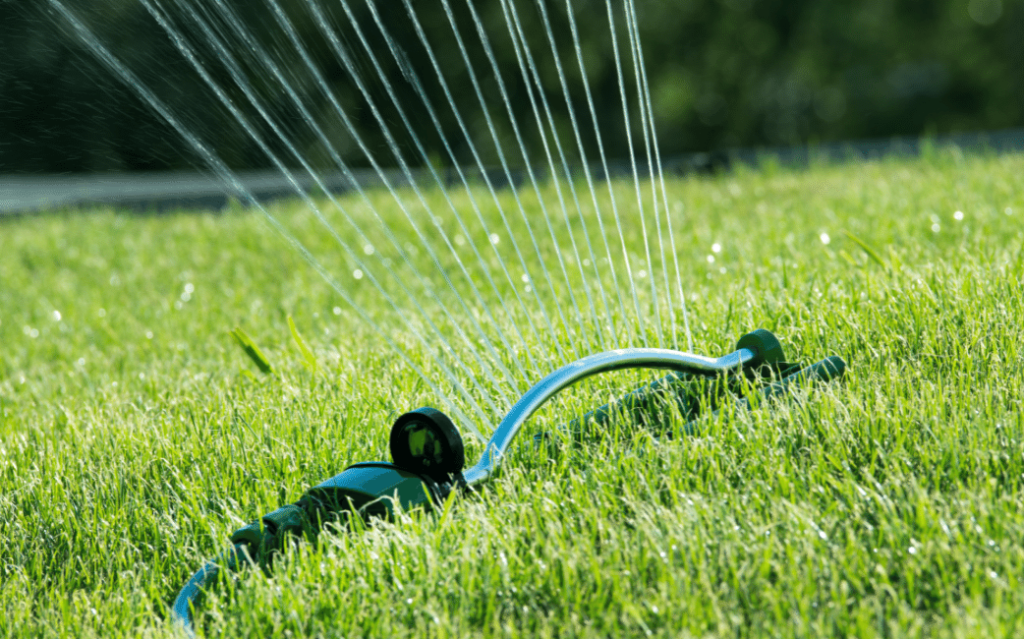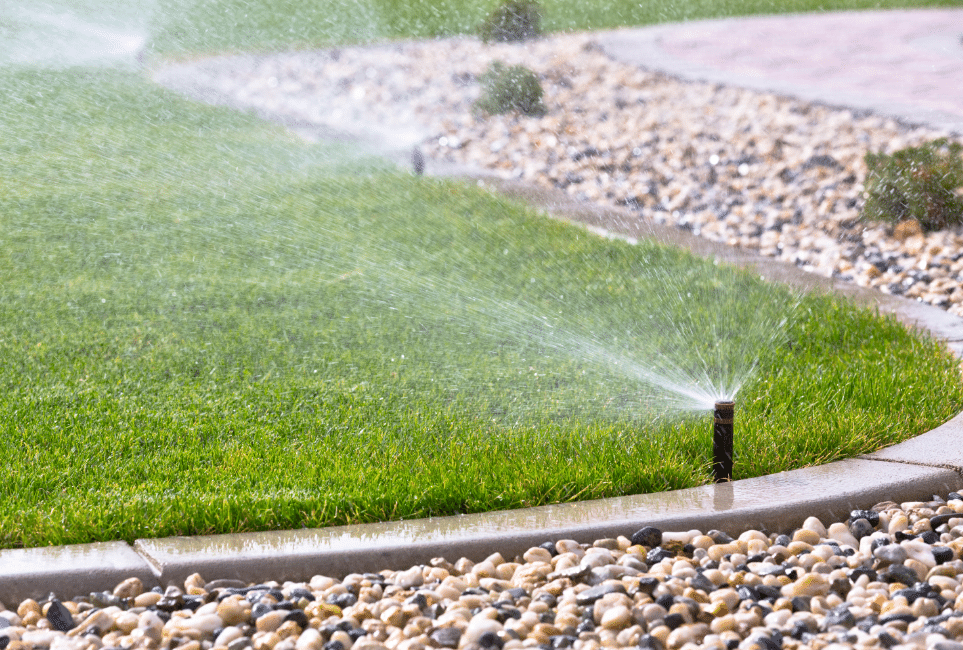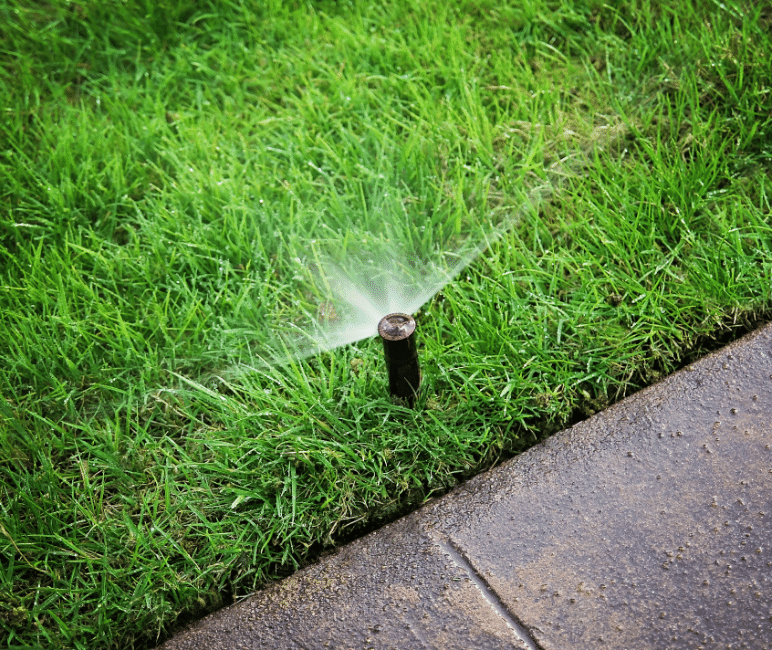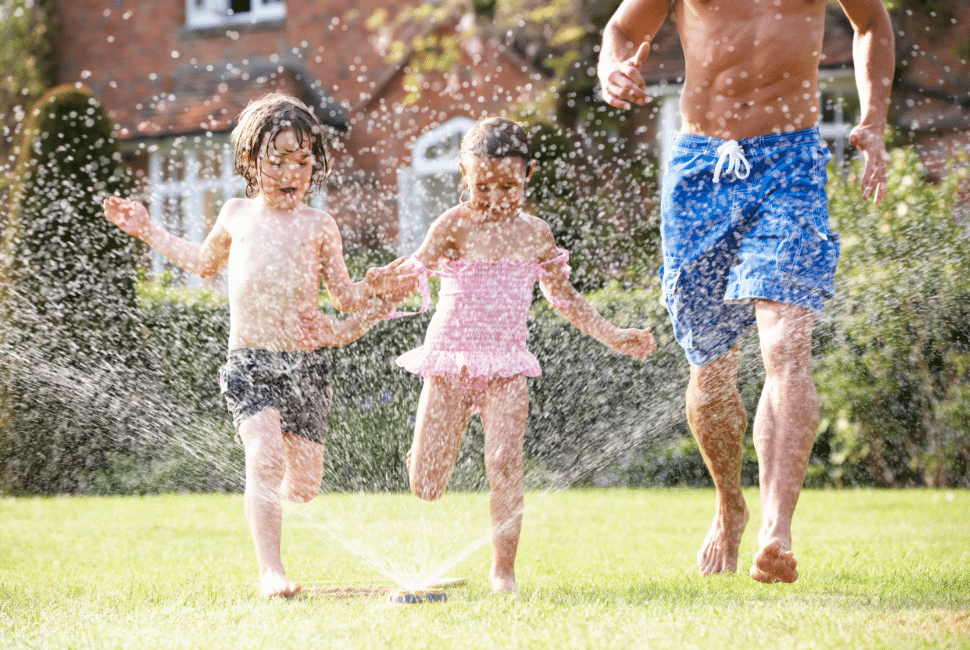Water, obviously, is essential to keeping your lawn healthy. However it’s not enough to just run the hose for a few minutes a week. A few factors are important for watering your lawn: Timing, the amount of water used, and grass type.
Here are some tips to make sure that you keep your lawn healthy & happy. Remember to call your local lawn care specialist if you’d like to talk to an expert or get some help watering your lawn.
Timing: When Do I Water My Lawn?
The color of your lawn will tell you if it’s desperate for water. If your grass is dulling and losing its bright green color, changes are that it’s thirsty. An easy test to see if your lawn needs watering is to walk on the grass. If your footprints don’t disappear relatively quickly, then your lawn needs water.
Why?
Because grass needs hydration to spring back into place after being stepped on. If it doesn’t have that required moisture, grass tends to stay flat after being stepped on. But don’t fret- most grasses are very resilient and can bounce back after going brown from drought or lack of attention.
How Much Water To Use
The general rule is to water until the top 6-8 inches of soil is wet. That’s because that depth is about as deep as grass roots grow. That translates to about 1 inch of water per week (from rain or your hose) to soak the soil. You don’t need to water all at once, you can spread it out as well. Keep an eye on the weather report when you are planning on watering your lawn!

Time of Day To Water
The best time to water is early in the morning. The water pressure is high and the heat won’t evaporate all the water. Water also seeps into the ground easier in the morning since the sun hasn’t made the soil hard yet.
Later in the afternoon is also a good time, but make sure that your leave enough time for water to seep into the ground before nightfall.
Night watering is NOT a good idea. This leaves your lawn wet overnight, which invites disease and pests.
Mid-Day watering won’t hurt your lawn, but it probably won’t help either. In the heat of the mid-day, most water simply evaporates before it can soak the soil.
How Much Do I Water My Lawn?

More often than not, mother nature gives us all the lawn watering we need. But here’s the math: Lawns need about 1 inch of water a week, soaking the top 6 inches of soil. Once inch of rain is 623 gallons per 1,000 square feet. Sprinklers have a “GPM” or gallons-per-minute rating, so find that number.
To see how much water your lawn needs, multiply the square footage by 0.62 gallons. For example, if your lawn is 2,000 square feet, you would multiply 2,000 x 0.62 = 1,240 gallons. That’s how much water you’ll need to properly soak a lawn that size.
Then, simply divide that number by the GPM of your sprinkler, and that will tell you how many minutes you need to water your lawn and soak the soil properly.
Test The Soil!
After you’ve done all the math, it’s time for some trial-and-error. After each watering, use a dowel or a tool to probe into the soil. You want to make sure you soak 6 inches down but you don’t want to waste any water by going deeper.
What Kind of Sprinkler Do I Use?

In-ground sprinkler systems are very popular. There are a few issues with these, however. The cost can be pretty high, first off. Second, lots of the time these systems work on timers. And sometimes people forget to turn off the systems when rain is coming. Water waste is a real thing! We have seen too many people with their automatic sprinklers on full blast in the middle of a rainstorm.
More General Lawn Watering Tips

Yes, you CAN run around the sprinkler without damaging your lawn. Just be careful!
Try watering on an irregular schedule. It doesn’t rain on the same day every week, right? Mix up your watering schedules to mimic how nature waters your lawn.
Avoid using sprinklers on windy days. You’ll end up wasting a lot of water.
Maintain your underground sprinkler system if you have one! Have it professionally inspected and maintained regularly. Issues with these systems can be very costly.
Look where your runoff goes to avoid erosion on your property.
For watering plants, seriously consider a rain barrel system. These are a super easy DIY project that helps you and the environment. You can save on your water bill by collecting rainwater from your gutters and storing it in rain barrels, then using that water for your plants and landscaping.
Happy Watering!
We hope you liked our post. We’d love to hear from you and help you with any lawn care needs you have. Feel free to get in touch with us anytime. we hope that our watering tips help you keep your lawn looking great through this Summer!
